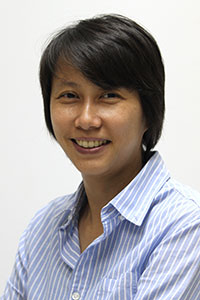
A day before Italian photographer Jan Daga opened his exhibition on the doomed Mahakan community at a Bangkok venue, I asked him when he planned to visit the struggling neighbourhood so I could also attend, but he appeared reluctant to venture back there.
Not because he had another engagement. Rather, he said he was not sure if he could make it to Mahakan ever again. He already felt uneasy when visiting the embattled community last October, as much of the charm of the living community had evaporated since his initial visit the year before.
In opening the "Last Stand for Pom Mahakan" exhibition on Tuesday at Bangkok Art and Culture Centre, Daga was due to give a talk with two academics who are also well-acquainted with the community.

Sirinya Wattanasukchai is a columnist, Bangkok Post.
Michael Herzfeld, a Harvard professor, researched and wrote a book on Mahakan while Chatri Prakitnonthakan, an architecture lecturer at Silpakorn University, conducted a study aiming to turn the fort community into a living museum.
We finally did manage to make what may end up being our final visit there on Monday morning, only to find the community once squeezed onto a 5-rai plot behind a thick white wall was mostly abandoned -- almost like a ghost town.
When we arrived two garbage trucks were already there and a third was on its way. They were scheduled to clear away the debris of a house in the northern end of the community that was going to be torn down within the hour.
Congratulations to City Hall. You have practically won this long battle -- over your own people.
Whereas the community boasted about 40 houses a few years ago, fewer than 20 were left that morning. Only a handful of residents were still living inside the community that has been "protected" by soldiers from the Internal Security Operations Command, who have been deployed at the community since Nov. (One of the Isoc officials secretly took pictures of us talking to the residents that morning.)
The Bangkok Metropolitan Administration (BMA) has managed to kick out over 100 residents -- some are third-generation families of the original settlers there -- and demolish dozens of wooden houses. Some of those structures dated back to the early Rattanakosin era around the start of the 19th century.
In short, the BMA has broken the community up.
Its goal is to remove all of the people, whose simple lifestyle lent a quaint charm to the city's old town. This shameful operation is now nearly complete.
Mr Herzfeld and Mr Chatri have decided not to step into the embattled community, more or less, for the same reason. Mr Chatri even thought this was the last time he would be talking about the issue. While many members of the public, including foreigners, see how Bangkok is losing part of its cultural diversity by uprooting the community, City Hall is either oblivious to this or simply doesn't mind.
In his exhibition, Mr Daga largely refrained from anthropological musings. Instead of focusing on the rare wooden architecture, as other photographers have done, he turned his attention to the people, who seem to have lived through a war against the authorities and City Hall.
"City Hall was very clever to send [workers] to confront the residents," he said.
"These are the bad guys. Always smiling, friendly, nice in the community," he added as he showed a few photos of City Hall workers with cleaning equipment.
The photos, taken over the course of two years, portray a group of City Hall workers who appear eager to clean up the mess after houses are demolished and their inhabitants evicted.
"How could they fight each other? You don't want to fight against the guys who demolished one of the houses in the community, who had earlier helped fix [your] broken window," he asked.
Daga said he could not understand why the BMA would want to erase part of the city's history. He said the will to conserve heritage is much stronger in Italy.
"[Mahakan] is how Bangkok must have been 100 years ago. It is a community where kids are playing and running without the risk [of being hit by cars or motorcycles]."
Mr Herzfeld said the current state of Pom Mahakan does not fit with the middle-class ideology of a civilised city, in the BMA's view.
So instead of improving the quality of life and sanitation for residents, the BMA chose to remove the community altogether, erasing part of Rattanakosin history, for a new "public park" that is considered more valuable by the middle class and short-sighted officials.
